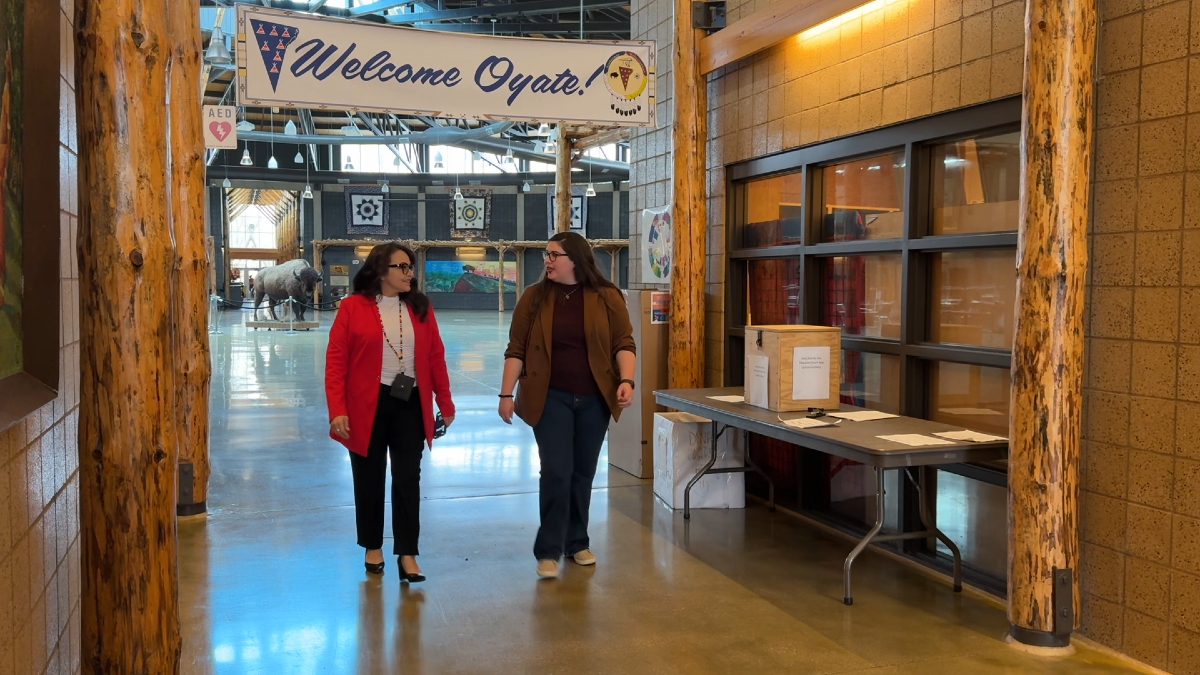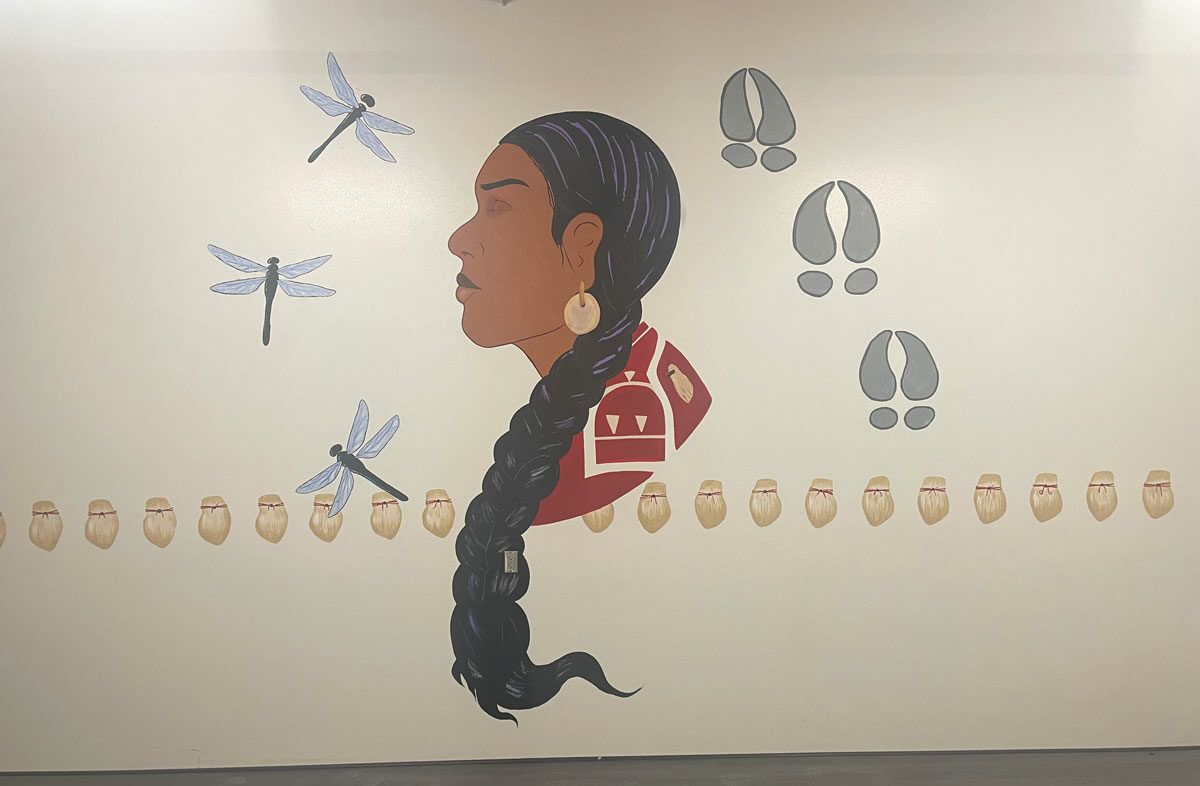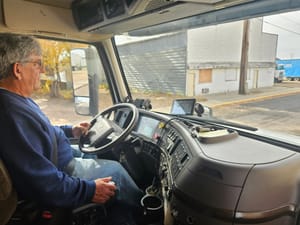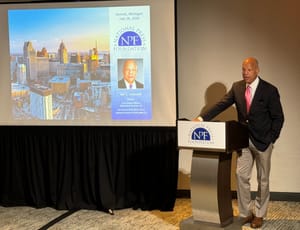AGENCY VILLAGE, S.D. – The South Dakota Native Tourism Alliance became a nonprofit this year and is entering the next phase of its work, five years after it was started by the state's nine Native American tribes and dozens of other organizations to promote entrepreneurship in economically disadvantaged communities and preserve and promote Indigenous culture.
Tourism is the state's second-largest industry and a primary economic engine in plenty of towns across the state. The idea is to connect more of those millions of tourists and their billions of dollars with South Dakota's rich American Indian culture.
"When you look at tourism and the idea of having a place for visitors to come that's just off the interstate, I think that is tourism gold," said Sisseton Wahpeton Oyate tribal archivist Tamara St. John.

The Tribal Historic Preservation Office in Agency Village features a growing collection of hundreds of historic artifacts and Native art. The collection is currently housed in the tribal administration building on the Lake Traverse Reservation in the northeast corner of the state.
"The tribe has been very accommodating, but we have outgrown (this space)," St. John said. The tribe is in the early stages of developing a visitor center to house the collection.
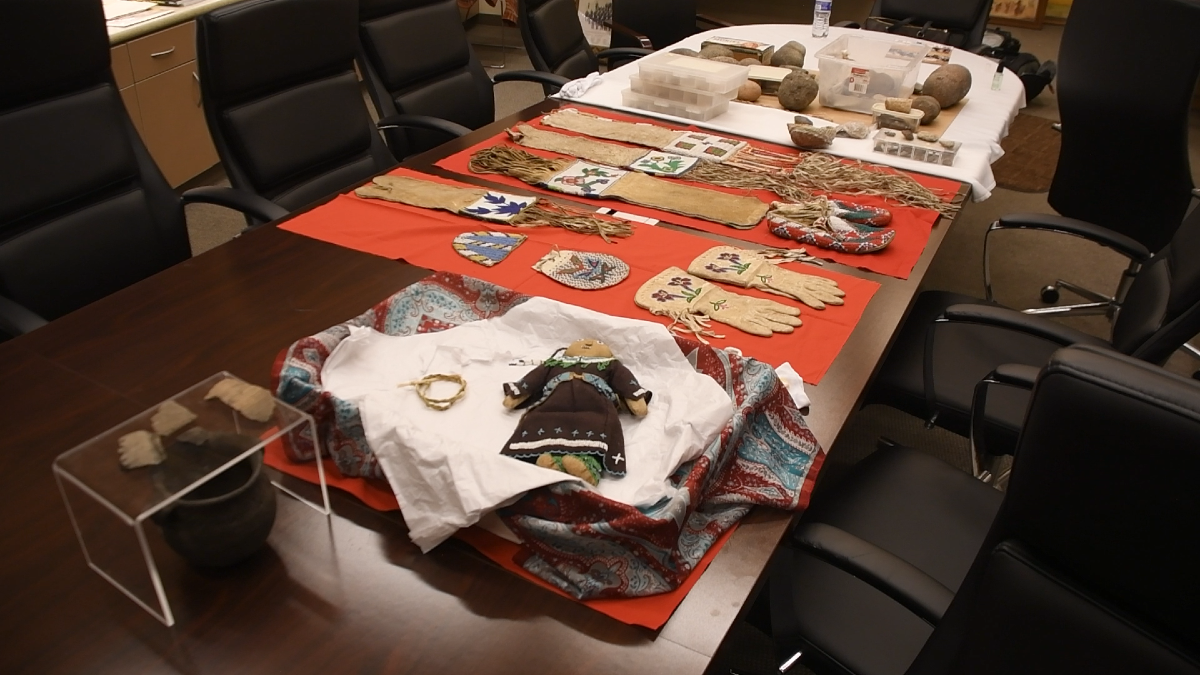
St. John's belief in the opportunity tourism can offer reservation communities spurred her to spend the past five years as a state representative.
"Seeing that tourism is such a huge economic driver for the state of South Dakota, and it really could benefit our area," she said. "I believe that it is an act of sovereignty for a tribe to take control of their cultural history by telling their own story. And what better way to do that than tourism with people from your local community to even internationally?"
Around the same time St. Join joined the Legislature, other stakeholders were meeting to discuss the potential of Native American tourist attractions.
"We've had fits and starts for decades with tribal tourism," Secretary of Tourism Jim Hagen said in an interview with South Dakota Public Broadcasting earlier this year. "About five years ago we really made a concerted effort to reach out to our tribes, tribal partners and friends and say, 'Let's really get this going.'"
GWU provided guidance
The Tourism department sought outside help from the International Institute of Tourism Studies at George Washington University, which "has been specializing in helping Indigenous people create tourism on their reservations," Hagen said.
The institute served as a facilitator of early meetings of an ad hoc group of local and tribal entities with an interest in developing tourism in their communities.
That group eventually became the South Dakota Native Tourism Alliance (SDNTA), which earned 501(c)(3) nonprofit status earlier this year. The alliance includes more than 50 network participants such as representation from tribes like St. John, the South Dakota Department of Tourism and businesses that operate in tribal communities.
"Together, we represent and try to get representation from all nine tribes in our area," said Frank Kills in Water, SDNTA board chair. "It helps us as an alliance to have partners on every reservation to help bring tourism to each reservation in a good way."
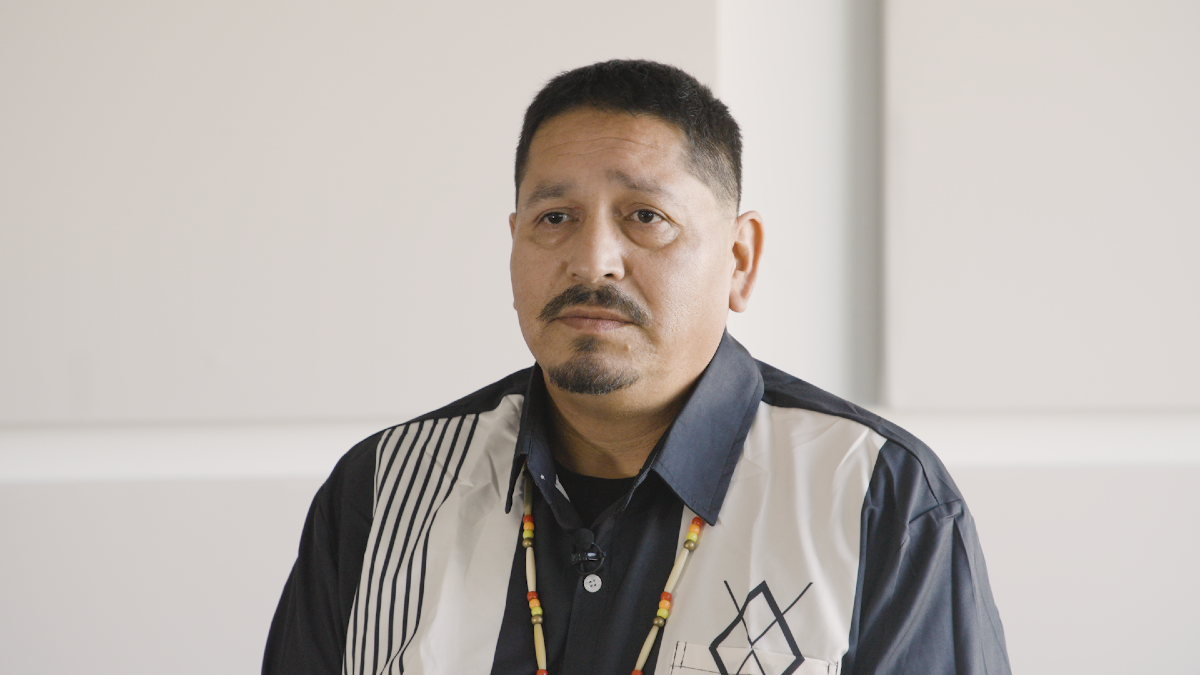
The early work with George Washington University also resulted in a five-year Native American Tourism Development and Management Plan specific to South Dakota. The 145-page plan includes existing attractions across the state's nine reservations, along with opportunities for further development.
"Through these collaborations, we've come to find out that our experiences in Indian Country are very unique," said Kills in Water. "And GW helped us to kind of enrich those and point them out, not only to the tourism industry but to ourselves as well. So we came to the understanding in these meetings that our culture was the way that we were going to be able to show the rest of the world that we're still here."
Encouraging entrepreneurship
Preserving and sharing tribal culture aren't the only potential benefits of developing Native American tourism. There's no direct line between the state's nearly $5 billion dollar tourism industry and the economically disadvantaged reservation areas.
Both St. John and Kills in Water see tourism as an economic and entrepreneurial opportunity for tribal communities, where jobs can be scarce.
"The tourism that we want to start isn't going to make our tribes rich," said Kills in Water. "The ultimate goal is that ikce wicasa (common man) going out and using that skill and using something that he's learned through the work of our alliance and our partners in the industry to go and bring that dollar home to his family."
One of the small businesses represented in the SDNTA is Tatanka Rez Tourz, touted as the only Native American-owned tour company in South Dakota. It's run by Guss Yellow Hair and Tianna Yellow Hair, a father-daughter duo on the Pine Ridge Indian Reservation. The two also hosted a training for other prospective Native American tour guides in May through the SDNTA.
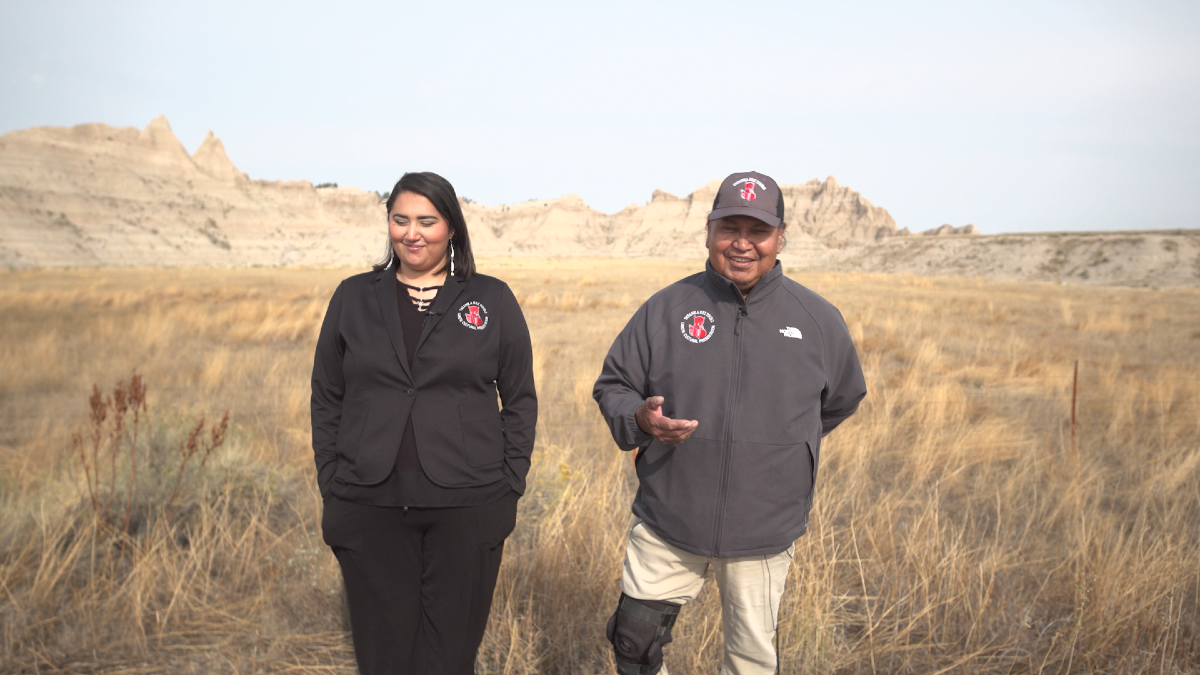
Guss Yellow Hair first suggested the idea for a tour guide business to his daughter in 2011, after his experience giving tours as a cultural consultant for the Pine Ridge Chamber of Commerce.
"A lot of people were asking questions, and in my mind I was thinking, 'Well, who better to tell our story than me, a Lakota-Cheyenne person who grew up on the reservation?'" Guss remembered.

Tianna Yellow Hair initially presented the idea during a business plan competition at the Lakota Nation Invitational – and won. She and her father launched the business about nine years ago. They currently offer three tour packages that range in time commitment and the topics covered.
"We try to accommodate you and take that into consideration, while still following who we are and why we started this," said Tianna Yellow Hair. "Which is to educate our visitors on things that have already been in the public but also to knock down a lot of those stereotypical views that people have of us."
Room for growth
The same difficulties that make developing a new industry in reservation communities appealing also make it a challenge – from remote locations to infrastructure needs.
Tianna Yellow Hair, who also serves as secretary of the South Dakota Native Tourism Alliance, sees common themes around the state.
"A lot of times, people who come through South Dakota want to see an Indian reservation," she said. "And what we found in each of these reservations is we are open to the tourists, but we don't have the facilities to really host them. Which is not only restrooms, ATMs. Also our roads are an issue, hotel stays, places to eat, restaurants. We really lack a lot of tourist accommodations."
Investing in accommodations for visitors can be a hard sell, especially when so many residents have their own needs. Kills in Water said buy-in from the tribes has not been universal.
"Our own people feel like when a bus comes through, they're looking at us like we're animals in cages," he said. "They come and they see all our trash and our boarded-up houses and the struggles of reservation life ... and some of our people, they see tourism in a negative light. They see that, 'Oh, we're selling ourselves out. We're selling our culture.'"
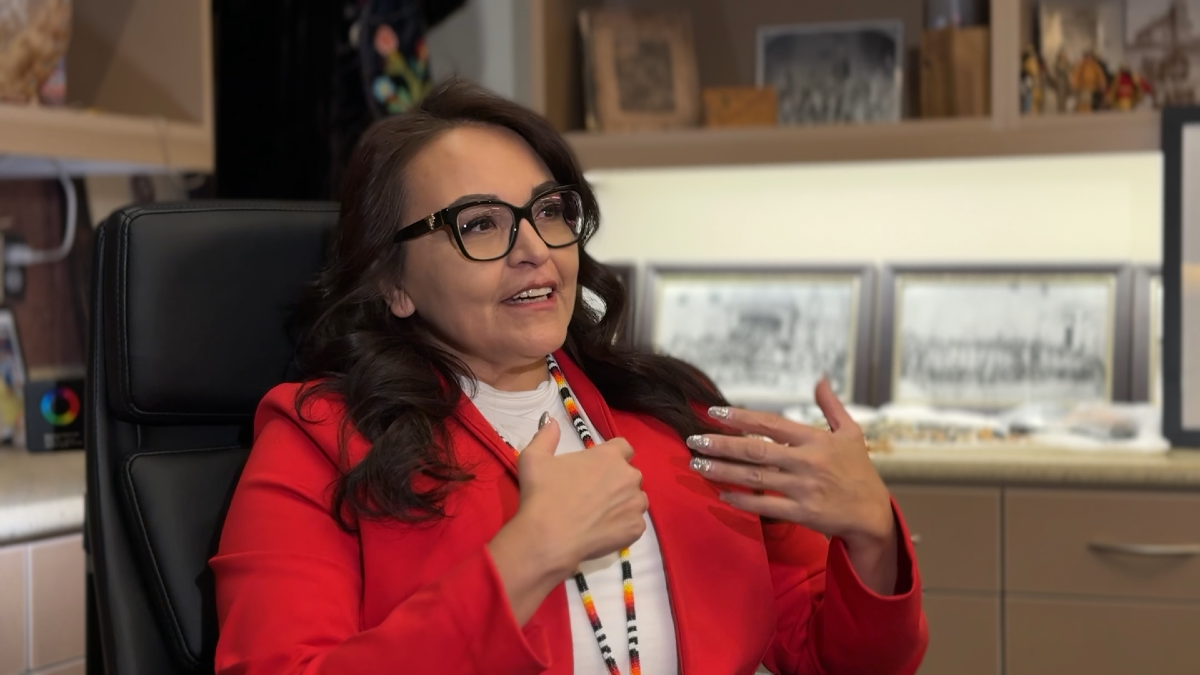
Other proponents of tribal tourism, like St. John, have a different perspective.
"I would say that by developing a tourism program, you're able to control those things. You're really able to define by your policies or your code where people can go. What would you like them to see? What would you like them to know? It's really a way of taking control."
The South Dakota Native Tourism Alliance held its quarterly meeting at Crazy Horse Memorial earlier this month. Kills in Water hopes it becomes the go-to organization to help develop tourism opportunities for Native people in South Dakota.
"The entrepreneurial aspect of this is giving individuals a chance to go out and become tour guides. It's giving them a chance to showcase their skills and what they do," he said. "And it's giving them a voice."
How to watch 'South Dakota Focus'
The next episode of "South Dakota Focus" airs on Thursday, Nov. 21, at 8:30 p.m. Central time / 7:30 p.m. Mountain time. It can be viewed on SDPB-TV1, Facebook, YouTube and SD.net.
The episode includes:
- A visit to the Tribal Historic Preservation Office of the Sisseton Wahpeton Oyate on the Lake Traverse Reservation
- A conversation with the board chair of the South Dakota Native Tourism Alliance
- How the Tatanka Rez Tourz business works to educate visitors on contemporary life on the Pine Ridge Indian Reservation
This story is part of a series that Jackie Hendry, host and producer of South Dakota Public Broadcasting's "South Dakota Focus," will write to preview the upcoming show on South Dakota News Watch, an independent, nonprofit news organization. Read more in-depth stories at sdnewswatch.org and sign up for an email every few days to get stories as soon as they're published. Contact us at info@sdnewswatch.org.

